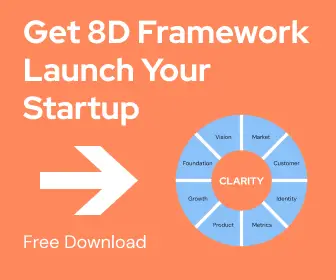There are a lot of similarities between marketing and promotion. Both of these business activities are designed to increase traffic to companies and boost brand awareness, and they are often managed by similar teams within an organization. However, understanding the differences between marketing and promotion can be the deciding factor when it comes to the success of your business, as these distinctions will fuel your marketing strategies to convey your brand message, products and services. Therefore, in this article, we’ll go into marketing vs promotion. We’ll not only be breaking down the differences between marketing and promotion, but also bringing you a guide to implementing promotion into your marketing strategy, to drive business growth and increase your profit margins.
Marketing vs Promotion
Understanding how marketing and promotion differ can be complicated, especially for people who don’t work in the marketing industry. There are a lot of complexities within this space that can sometimes leave marketing as an entire concept being confused with simply the promotion of a product or service. While marketing does involve a degree of product promotion, it’s easier to see this as an umbrella under which promotion works alongside other functions, like market research and customer retention, to develop the overall success of a business.
What is Marketing?
Before diving into marketing vs promotion, let’s define marketing. Marketing can be best defined as the entire process of bringing a product or service to market. From the initial idea, this could involve finding and surveying potential customers, before researching the market to gauge how much interest might exist for a specific item. Marketing teams will then work to foster this interest through a range of advertising methods designed to attract and encourage their target audience to invest their time and energy into a product. As a result, a wide range of individuals can be targeted in a marketing campaign, with specific metrics designed to test its success. By establishing a clear, structured marketing strategy, businesses can ensure that they are making the right choices to reach out to and retain customers at every stage of the process.
Examples of Marketing
As marketing encompasses a range of business functions, it can be adapted to suit different project plans and ambitions. Some of the most popular styles of marketing include:
- Outbound Marketing:
One of the more popular marketing strategies is outbound marketing, which involves businesses directly reaching out to customers to initiate the first contact with them.
- Inbound Marketing:
While outbound marketing strategies work to initiate the first contact with customers, inbound marketing does the opposite, and prioritizes creating content that encourages customers to make the first move and get in touch for more information or to purchase a product. Quality, original content creation is vital to the success of any good inbound marketing strategy, as it delivers value to customers who are specifically searching for it.
- Social Media Marketing:
With the meteoric rise of digital marketing, using social media is a great way to market your product, and teams who do this use a range of different channels and platforms to establish and reinforce their brand identity.
- Relationship Marketing:
This all-encompassing strategy focuses on building long-term customer relationships to improve a business’ retention rates, so typically includes tactics like loyalty programs, special offers for existing customers and frequent communication that reiterates a brand’s mission statement and identity.
What is Promotion?
So how does promotion differ from marketing? Best described as a set of activities designed to publicize a product or service, promotion aims to increase public awareness and drive sales figures through directly addressing what the product is, and how it can benefit the lives of its user. Often, promotion will draw on the marketing tactics that have built a brand identity, but only do this through the application of them to the product and how this can make the product different to its competitors. Promotion is a vital part of the marketing process, as it clarifies to customers that the product is one that they need, or that can improve their daily life. Unfortunately, that is also one of the reasons why marketing vs promotion can get so confusing.
Let’s review some examples of promotion to better grasp the concepts of marketing vs promotion.
Examples of Promotion
Unlike marketing, which can include a range of functions that span the entire company lifecycle, promotion is more comprised of the ways businesses reach out to customers to drive sales for a particular product, such as:
- Advertising Promotion:
As one of the more popular promotion types, general advertising consists of planned activities designed to increase product awareness and bring more customers to a brand. This can include traditional advertising methods like television and radio promotions.
- Sales Promotion:
Designed to quickly increase demand for a product, or pique the interest of potential customers, sales promotion uses temporary offers, contests or freebies to encourage customers to buy a product or service. If you’re a business owner looking to implement sales promotion into your marketing strategy, it’s important to monitor how frequently you use it, to avoid diluting the impact of your brand image. However, when done right, sales promotion is an effective way to advertise your products and services.
- Digital Promotion:
As society navigates the digital age, online or device-based promotion is a great way to reach a large number of customers, both existing and potential, at once, with limited financial investment; this strategy can involve both advertising and sales promotion techniques, but is done online to efficiently expand your reach and promote your brand identity.
In the digital space, you can use a variety of methods to promote your product, but some of the most valuable come in the form of written content like blog posts and articles that can be added to your brand’s website. Within these, your marketing teams can implement SEO (Search Engine Optimization) tactics to get your sites ranking at the top of the results pages.
Using a range of different promotion methods is a great way to establish a well-rounded approach to promoting your products, and works well when implemented into a highly developed marketing strategy.
Differences between Marketing and Promotion
Understanding the differences between marketing and promotion is key to a successful business strategy that drives sales figures and increases brand awareness. But keeping marketing vs promotion apart is often harder than it seems. Although it can be easy to conflate the two terms, it’s often helpful to recognize that the key difference between them is that promotion is one element of an overall marketing strategy.
Due to the specific, targeted nature of promotion, it cannot exist as a single functionality, and the teams who work on developing promotional material cannot do so without a clear understanding of the entire marketing process. Promotion is designed to build on the foundations of marketing, such as the brand identity, market research and customer satisfaction metrics, to drive awareness of the products forward and increase client reach.
Benefits of Promotion
Although promotion cannot succeed independently from an overall marketing strategy, this isn’t to say that it should not be utilized to its maximum potential. There are a whole host of benefits to using promotion within a business, including:
- Increased Brand Visibility:
Whether a customer is a loyal, long-term buyer, or they’ve never even heard of your brand before, they can learn more about your product offering through promotion, which is a great way to increase your brand visibility. Using different channels like television, radio and social media allows a huge number of people to learn about and interact with your company, which makes a solid promotion strategy invaluable for your business.
- Higher Sales Figures:
It goes without saying that effective promotion can increase your sales figures by raising awareness of your products and services and encouraging customers to visit your store or website.
- Solutions To Problems:
Another great benefit of using promotion is that it offers customers a solution to their problems. When people search for products and services, this usually comes from a problem that they want to find an answer for, whether it’s a house that needs a specific cleaning product or an event that requires a nice outfit. Promotion is a great way to reach out to these customers and directly answer their question using your product as the solution, and by doing this you can effectively boost your sales.
The wide range of benefits that come with a solid promotion strategy makes this an opportunity not to be missed for your business – without decent promotion, customers won’t be able to find and purchase your product, no matter how impressive it is.
How To Implement Promotion Into Your Marketing Strategy
Now that you know the difference between marketing and promotion, as well as the benefits that come with good promotion, you might be wondering how you can implement promotion into your marketing strategy. Or, even weigh marketing vs promotion and wonder whether promotion or a marketing strategy without promotion is enough. Briefly said, any successful marketing campaign will require you to back up your strategy with clear, persuasive promotion that demands attention and stops any financial investment going to waste. In this guide, we’ll bring you some simple steps through which you can effectively implement promotion into your marketing strategy
- Plan In Advance
Strong promotion requires you to plan ahead. How does the product on offer align with your overall brand image, and who is the target audience for that specific product? By using marketing techniques to research who you’ll be trying to sell your product to, you can prepare some effective promotional material that will reach out to them directly. Through proper planning, you can also manage the expectations of your team members, so that they are prepared to give their all when creating the perfect promotion material.
- Keep Things Simple
Although it can be tempting to go all out on a complex promotional strategy, keeping things simple is key to ensuring your customers are engaged and searching for your products. Studies have shown that customers are more likely to buy from brands that use uncomplicated terminology rather than complex specification detailing, which means you don’t need to overcomplicate your promotional material – just keep things simple, and your customers will thank you.
- Use A Range Of Channels
Once you’ve identified who your customers are, and created promotional material that makes your product easy to understand, it’s time to take your promotion to market. Using a range of channels to do this is an effective strategy that allows you to reach a huge number of people, so try to mix social media advertising in with more traditional outlets like television and radio when promoting your product.
- Develop A Success Tracking System
If you’re visibly growing your audience and selling more products, you’d be forgiven for automatically thinking that your promotions have been successful. However, there are a lot of metrics through which you can measure success, and it’s vital that you track the performance of your promotion consistently. Impressions are a great tool to use to see exactly how well your promotion is performing – how many people see your product in the first place, and how many subsequently buy it? If you’ve invested money into a promotional advert that gets 100,000 views on social media, but you only get a handful of sales, this might suggest that your promotion isn’t quite having the impact that you’d hoped for, even if you’ve sold more products than usual. Conversely, if your views are low, but you are turning a high percentage of those views into sales, then this shows you that your brand identity and product depiction is on the right track.
- Encourage Customer Feedback
The final step in any promotion rollout should be encouraging customer feedback to better understand why people purchased your product, and whether they were satisfied with it after it arrived. There are a number of ways that you can do this, including emailing your customers with a short survey, where they can elaborate on how they found your business, and what the buying process was like. By surveying people who have experienced your product first-hand, you can find out whether it was your promotion that led to a sale, or if there is more work to be done.
Closing Words
Running a business can be tough, especially if you’re in the early stages and are trying to grow your brand awareness and visibility in order to sell more products. Promotion is a fantastic way to do this, and as long as you understand that this strategy falls under the larger umbrella of marketing, which you should constantly be developing, you can see more sales and experience greater customer enthusiasm surrounding your company.








